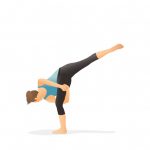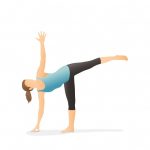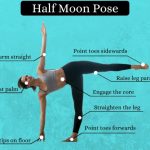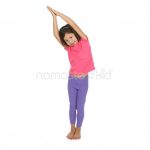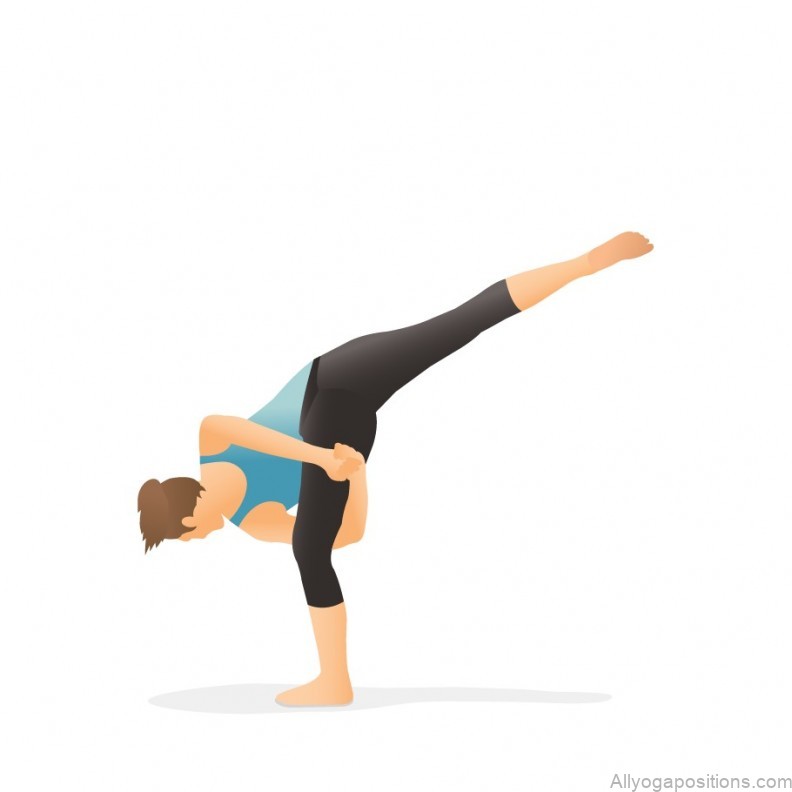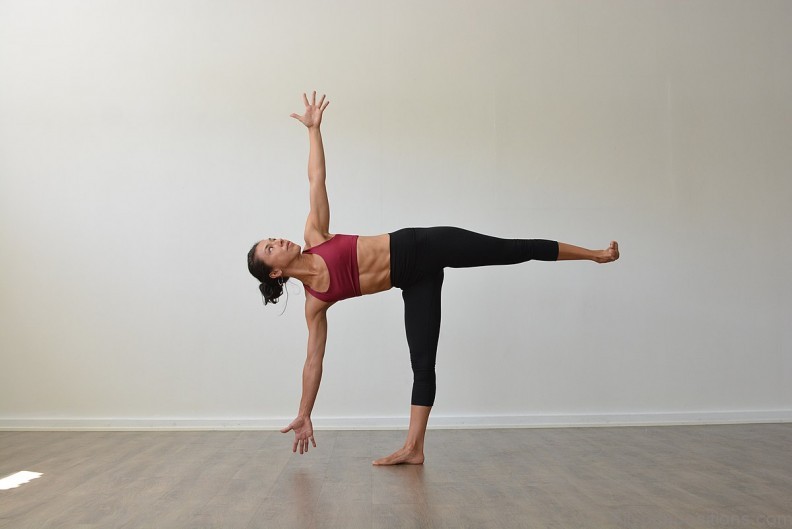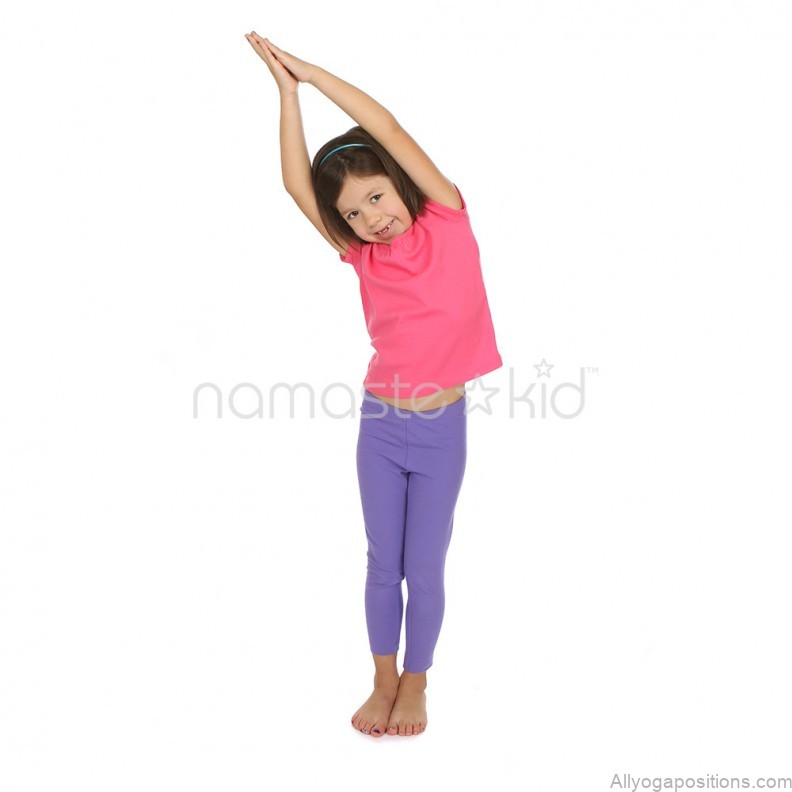Discovering the Revolved Half Moon Pose
In the serene world of yoga, each pose embodies its unique challenges and gifts, and the Revolved Half Moon Pose is no exception. Often referred to as Parivrtta Ardha Chandrasana in Sanskrit, this exquisite asana is an enchanting combination of balance, strength, and grace.
The Revolved Half Moon Pose involves a delicate twist of the body while balancing on one leg, with the other leg extended behind, creating a mesmerizing appearance of a half-moon. This pose, like many others in yoga, has roots in ancient traditions and is known for its transformative effects on both the physical and mental well-being of practitioners.
Unraveling the Graceful Balance: Exploring the Revolved Half Moon Yoga Pose Photo Gallery
2: The Physical and Mental Benefits
Engaging in the Revolved Half Moon Pose offers a myriad of benefits, making it a highly valuable addition to any yoga practice. Physically, this pose helps to:
1. Improve Balance and Coordination: The act of balancing on one leg requires concentration, thereby strengthening the muscles in the feet, ankles, and legs. This, in turn, enhances overall coordination and stability.
2. Increase Spinal Flexibility: The twisting motion involved in the pose deeply stretches and stimulates the spine, promoting greater flexibility and maintaining its health.
3. Enhance Core Strength: The engagement of the core muscles during the pose aids in building a strong and stable core, improving posture and supporting the back.
4. Open the Chest and Shoulders: The twist in the pose opens up the chest and shoulders, expanding the breath and promoting better lung capacity.
5. Stimulate Digestion and Detoxification: The gentle compression applied to the abdomen during the pose stimulates digestive organs, aiding in the digestion process and promoting detoxification.
Apart from the physical benefits, the Revolved Half Moon Pose also has positive effects on the mind and emotions:
1. Mental Focus and Concentration: Balancing in this intricate pose demands mental focus and concentration, helping to calm the mind and improve mindfulness.
2. Stress Relief: The combination of balance and deep breathing soothes the nervous system, reducing stress and anxiety.
3. Improved Self-awareness: The practice of this pose requires self-awareness and self-assessment, leading to a better understanding of one’s body and its capabilities.
3: A Step-by-Step Guide to Mastering the Pose
While the Revolved Half Moon Pose may seem daunting at first, with consistent practice and patience, it can be mastered by practitioners of all levels. Here’s a step-by-step guide to achieving the pose:
Step 1: Warm-Up: Begin with a gentle warm-up to prepare your body for the pose. Focus on opening the hips, stretching the hamstrings, and warming up the spine.
Step 2: Mountain Pose (Tadasana): Stand tall with your feet hip-width apart and arms by your sides. Root your feet into the ground and lengthen your spine.
Step 3: Transition to Half Forward Bend (Ardha Uttanasana): Inhale, then exhale as you fold forward from the hips, keeping your back straight. Place your hands on the floor or blocks beside your front foot.
Step 4: Move into Revolved Triangle Pose (Parivrtta Trikonasana): Inhale deeply as you step your left foot back and align it at a 45-degree angle. Square your hips towards the front of the mat. Place your left hand on your right shin or a block, and extend your right arm towards the sky, twisting your torso.
Step 5: Transition to Revolved Half Moon Pose: From Revolved Triangle Pose, shift your weight onto your right foot and lift your left leg off the ground, keeping it straight and strong.
Step 6: Open Your Hips: Slowly start to twist your torso to the right, bringing your left hip on top of your right hip. Engage your core for stability.
Step 7: Extend Your Left Arm: Reach your left arm toward the sky, aligning it with your right arm. Keep your gaze on the ground for balance.
Step 8: Hold the Pose: Maintain the pose for several breaths, finding stability and length in the spine while breathing deeply.
Step 9: Release the Pose: To come out of the pose, slowly lower your left hand and bring your left leg back to the ground. Return to Mountain Pose and repeat the sequence on the other side.
4: Modifications and Variations
While the Revolved Half Moon Pose can be challenging, there are several modifications and variations that can make it more accessible to different practitioners. Some common modifications include:
1. Using Props: Placing a block under the hand or using a wall for support can provide extra stability, especially for beginners.
2. Bent Knee Option: If balancing on one leg is too challenging, try performing the pose with the lifted leg’s knee bent, providing more support and balance.
3. Half Revolved Half Moon: Instead of fully twisting the torso, keep the chest facing the ground and lift the back leg slightly, reducing the intensity of the twist.
4. Assisted Pose: Practicing this pose with the help of a yoga teacher or a partner can offer additional support and guidance.
5: Incorporating Revolved Half Moon into Your Yoga Routine
The Revolved Half Moon Pose can be a transformative addition to your regular yoga practice. Here are some tips for incorporating it into your routine:
1. Warm-Up Thoroughly: Always start with a comprehensive warm-up to prepare your body for the demands of the pose.
2. Practice on Both Sides: Balance your practice by performing the pose on both the right and left sides to ensure symmetry and strength building.
3. Find Your Edge: Challenge yourself, but avoid pushing too hard. Listen to your body and respect its limitations.
4. Breathe Mindfully: Focus on deep, steady breaths during the pose to calm your mind and maintain balance.
5. End with Savasana: After practicing the Revolved Half Moon Pose, take a few minutes in Savasana (Corpse Pose) to allow your body to integrate the benefits of the practice.
In conclusion, the Revolved Half Moon Pose is a captivating yoga asana that offers a plethora of physical and mental benefits. Embrace the journey of mastering this pose with patience and dedication, and witness the profound impact it can have on your overall well-being. Allow its graceful balance to flow into your life, both on and off the yoga mat, as you explore the depths of self-awareness and inner strength.
Maybe You Like Them Too
- Mastering Virabhadrasana A: The Warrior Pose of Empowerment
- Embracing the Essence of Wide Legged Forward Bend: A Deep Dive
- Unlocking the Power of Prasarita Padottanasana: The Wide-Legged Forward Bend
- The Power and Elegance of the Wide Legged Forward Bend II Yoga Pose
- Mastering the Warrior II Pose: A Deep Dive into Its Benefits and Techniques

